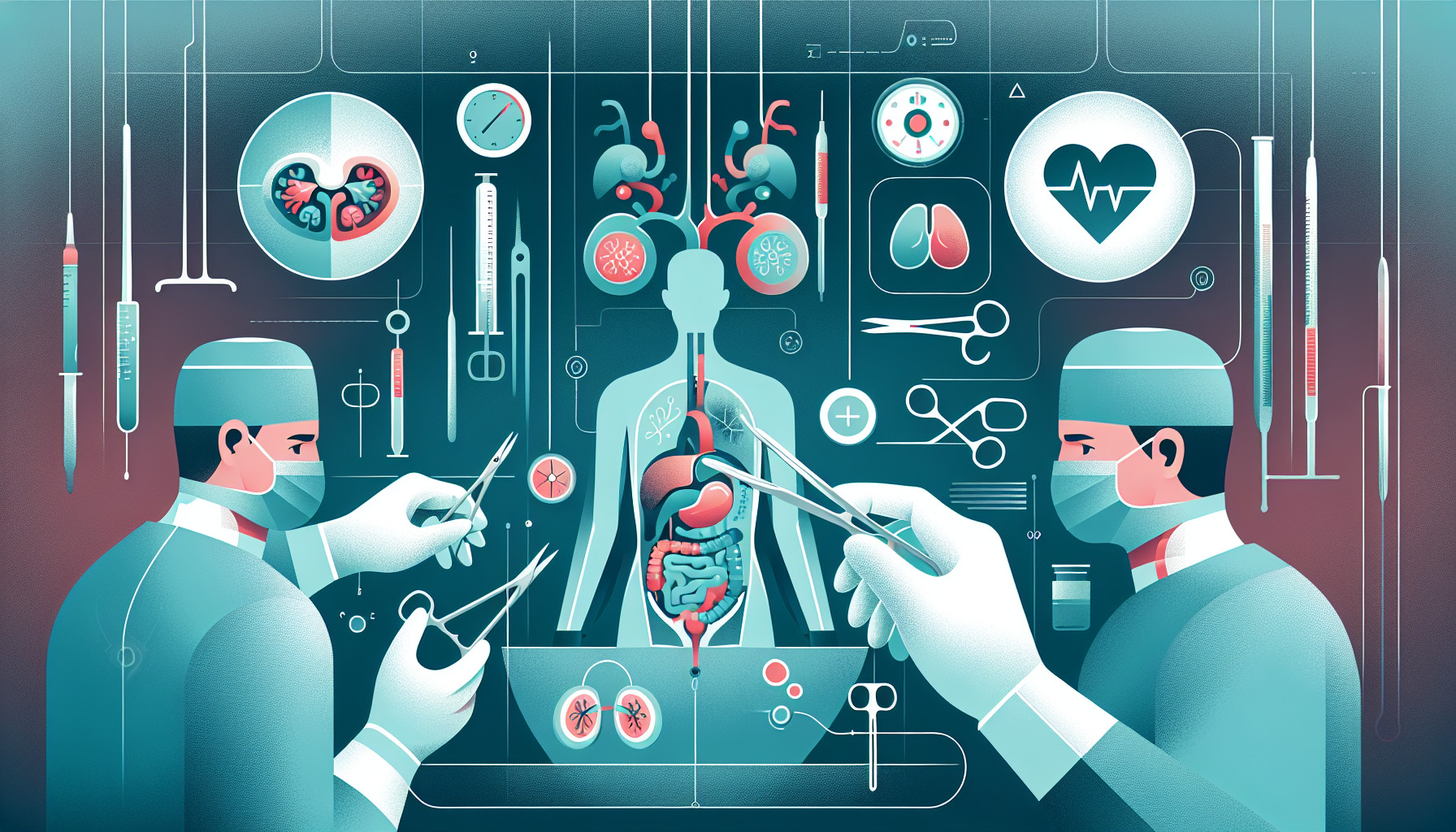Our Summary
This study discusses a treatment approach for patients with neurogenic bladder, a condition where a person cannot control their bladder due to a brain, spinal cord, or nerve problem. Often these patients also have problems with their bowel function. The researchers used a minimally invasive surgical technique, robot-assisted laparoscopy, to simultaneously reconstruct both the bladder and bowel, improving the management of these two organ systems.
In this study, they reviewed the cases of seven patients, most of whom had a condition called myelomeningocele, a birth defect where the spinal cord and its protective covering do not properly form. They used different methods to create a new route for the body to remove waste, including a technique using a part of the appendix.
In most cases, the patients had successful outcomes. The average operation time was about 9 hours, and the typical hospital stay was around 5 days, barring complications.
The study concludes that for patients with both bladder and bowel dysfunction, it is beneficial to consider treating both issues simultaneously. The described procedures using robot-assisted laparoscopy have proven to be a safe and effective method for managing these conditions.
FAQs
- What is neurogenic bladder and how is it related to bowel dysfunction?
- What is the robot-assisted laparoscopy technique used for in this study?
- How effective was the simultaneous reconstruction of the bladder and bowel in the cases studied?
Doctor’s Tip
A doctor might tell a patient undergoing pediatric urologic reconstruction to consider treating both bladder and bowel dysfunction simultaneously, as it can lead to better outcomes. They may also recommend considering minimally invasive surgical techniques, such as robot-assisted laparoscopy, for improved management of these conditions.
Suitable For
Patients who are typically recommended pediatric urologic reconstruction are those with neurogenic bladder, spinal cord injuries, spina bifida, bladder exstrophy, posterior urethral valves, and other congenital anomalies affecting the urinary tract. These patients may experience issues such as urinary incontinence, urinary retention, recurrent urinary tract infections, and other complications related to their condition. Pediatric urologic reconstruction aims to improve bladder function, urinary continence, and overall quality of life for these patients.
Timeline
Before pediatric urologic reconstruction:
- Patient experiences symptoms of neurogenic bladder, such as urinary incontinence or retention, and bowel dysfunction.
- Patient undergoes diagnostic tests to determine the underlying cause of their bladder and bowel issues.
- Treatment options such as medications, catheterization, or other non-surgical interventions may be attempted first.
- If non-surgical treatments are not effective, patient may be recommended for pediatric urologic reconstruction surgery.
After pediatric urologic reconstruction:
- Patient undergoes robot-assisted laparoscopic surgery to reconstruct both the bladder and bowel simultaneously.
- Surgery typically lasts about 9 hours and patient stays in the hospital for around 5 days.
- Post-surgery, patient may experience some discomfort and require pain management medication.
- Patient undergoes follow-up appointments to monitor their recovery and ensure the success of the reconstruction.
- Patient experiences improved bladder and bowel function, leading to a better quality of life.
What to Ask Your Doctor
What are the potential risks and complications associated with robot-assisted laparoscopy for pediatric urologic reconstruction?
What is the expected recovery time and post-operative care for a child undergoing this type of surgery?
How long do the improvements in bladder and bowel function typically last after this type of reconstruction?
Are there any long-term effects or concerns to consider for a child who undergoes this surgery at a young age?
What alternative treatment options are available for pediatric patients with neurogenic bladder and bowel dysfunction?
How often will follow-up appointments be needed after the surgery, and what will be monitored during these visits?
Are there any lifestyle changes or restrictions that the child will need to follow after the surgery to maintain the success of the reconstruction?
Are there any specific symptoms or signs to watch for that may indicate a complication or the need for additional medical attention after the surgery?
What is the success rate of this type of surgery for pediatric patients, and what factors may impact the overall outcome?
Are there any research studies or ongoing clinical trials related to pediatric urologic reconstruction that may be relevant for my child’s condition?
Reference
Authors: Halleran DR, Wood RJ, Vilanova-Sanchez A, Rentea RM, Brown C, Fuchs M, Jayanthi VR, Ching C, Ahmad H, Gasior AC, Michalsky MP, Levitt MA, DaJusta D. Journal: J Laparoendosc Adv Surg Tech A. 2018 Dec;28(12):1513-1516. doi: 10.1089/lap.2018.0190. Epub 2018 Jun 20. PMID: 29924670
